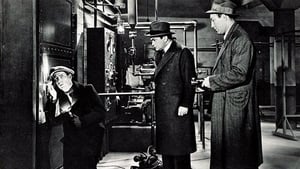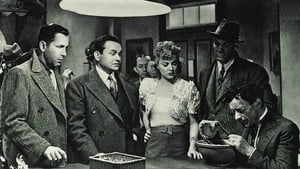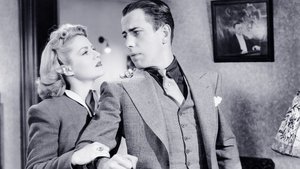Contact: [email protected]
Video Sources 0 Views
- Watch trailer
- The Amazing Dr. Clitterhouse


Synopsis
Table of Contents
ToggleReview: The Amazing Dr. Clitterhouse (1938) – A Captivating Blend of Crime and Psychology

Introduction
“The Amazing Dr. Clitterhouse” (1938) stands as a fascinating exploration of the human psyche against the backdrop of crime and intrigue. In this review, we delve into the intricacies of this early noir film, highlighting its significance in the realm of psychological thrillers.
Check The Full Colorized Movies List
Check Our Colorized Movies Trailer Channel
Understanding The Amazing Dr. Clitterhouse: Director, Cast, and Genre
Directed by the visionary Anatole Litvak, “The Amazing Dr. Clitterhouse” (1938) showcases his talent for crafting gripping narratives that push the boundaries of conventional storytelling. The film features a stellar cast, including Edward G. Robinson, Claire Trevor, and Humphrey Bogart, whose performances elevate the material to new heights. Blending elements of crime, drama, and psychological thriller, “The Amazing Dr. Clitterhouse” (1938) immerses viewers in a world of moral ambiguity and existential angst.
Exploring the World of The Amazing Dr. Clitterhouse: Plot and Characters
At its core, “The Amazing Dr. Clitterhouse” (1938) follows the exploits of a brilliant psychiatrist, portrayed by Edward G. Robinson, who becomes increasingly fascinated with the criminal mind. As he delves deeper into the underworld of crime, he forms an unlikely alliance with a gang of thieves led by the enigmatic Rocks Valentine, played by Humphrey Bogart. Along the way, he grapples with questions of morality, identity, and the nature of good and evil, leading to a shocking climax that challenges viewers’ perceptions of right and wrong.
The Art of Film Colorization
While “The Amazing Dr. Clitterhouse” (1938) was originally filmed in black and white, its themes of moral ambiguity and psychological complexity lend themselves well to the medium of colorization. By adding visual depth and dimension to the film’s stark imagery, colorization enhances the viewing experience, allowing audiences to immerse themselves fully in the dark and twisted world of Dr. Clitterhouse and his cohorts.
Early Colored Films: A Brief History
The history of colored films dates back to the early days of cinema, with filmmakers experimenting with various techniques to add color to their creations. From hand-painted frames to early Technicolor processes, the evolution of colored film has been marked by innovation and experimentation, paving the way for the development of modern colorization techniques that continue to captivate audiences to this day.
The Amazing Dr. Clitterhouse and Its Early Colored Version
The decision to release “The Amazing Dr. Clitterhouse” (1938) in a colorized format offers viewers a fresh perspective on the film’s dark and twisted narrative. By adding vibrant hues and shades to the film’s stark imagery, colorization enhances its visual appeal and immerses audiences in the morally ambiguous world of Dr. Clitterhouse and his criminal cohorts.
The Debate Over Film Colorization
The debate over film colorization remains a contentious issue in the world of cinema, with purists arguing that it compromises the artistic integrity of the original work. However, when done tastefully and with respect for the director’s vision, colorization can breathe new life into classic films, introducing them to a new generation of viewers and ensuring their continued relevance in the ever-changing landscape of cinema.
Examining The Amazing Dr. Clitterhouse as an Early Colored Film
As with any colorized classic, the impact of colorization on “The Amazing Dr. Clitterhouse” (1938) is a matter of personal interpretation. Some may argue that it enhances the film’s visual appeal and immerses viewers in its world, while others may feel that it detracts from the stark beauty of the original black and white version. Regardless of one’s stance on the issue, there’s no denying the enduring power of “The Amazing Dr. Clitterhouse” (1938) as a gripping psychological thriller that continues to captivate audiences with its timeless themes and unforgettable characters.
Influence and Legacy: The Amazing Dr. Clitterhouse’s Impact on Cinema
“The Amazing Dr. Clitterhouse” (1938) has left an indelible mark on the world of cinema, inspiring countless filmmakers and captivating audiences with its dark and twisted narrative. From its groundbreaking exploration of the criminal mind to its unforgettable performances, the film continues to resonate with viewers of all ages, reaffirming its status as a timeless masterpiece of the psychological thriller genre.
Director’s Cinematic Legacy: Beyond The Amazing Dr. Clitterhouse
Anatole Litvak’s influence extends far beyond “The Amazing Dr. Clitterhouse” (1938), with a diverse body of work that continues to captivate audiences around the globe. From “City for Conquest” to “Sorry, Wrong Number,” Litvak’s films are celebrated for their gripping narratives, complex characters, and atmospheric visuals, solidifying his legacy as one of the preeminent directors of Hollywood’s Golden Age.
Themes Explored in The Amazing Dr. Clitterhouse
“The Amazing Dr. Clitterhouse” (1938) delves into a myriad of themes, from the nature of good and evil to the complexities of the human psyche. Through its morally ambiguous characters and thought-provoking narrative, the film invites viewers to ponder the blurred lines between right and wrong, and the often unpredictable nature of human behavior.
Reception and Controversy Surrounding The Amazing Dr. Clitterhouse
Upon its release, “The Amazing Dr. Clitterhouse” (1938) received widespread critical acclaim, with many praising its innovative storytelling, atmospheric visuals, and unforgettable performances. However, the decision to release the film in a colorized format sparked debate among purists, reigniting the age-old discussion surrounding film preservation and artistic integrity. Despite the controversy, “The Amazing Dr. Clitterhouse” (1938) remains a beloved classic that continues to resonate with audiences of all ages, reaffirming its status as a timeless masterpiece of the psychological thriller genre.
Where to Watch The Amazing Dr. Clitterhouse Online
For those eager to experience the timeless allure of “The Amazing Dr. Clitterhouse” (1938), the film is readily available on popular streaming platforms such as Netflix, Amazon Prime, and Hulu. Whether you choose to watch it in its original black and white format or the early colored version, “The Amazing Dr. Clitterhouse” (1938) promises to captivate you with its gripping narrative, unforgettable characters, and atmospheric visuals.
FAQs About The Amazing Dr. Clitterhouse
Q: Is “The Amazing Dr. Clitterhouse” (1938) based on a true story? A: No, “The Amazing Dr. Clitterhouse” (1938) is a work of fiction, although its themes of crime and psychology draw inspiration from real-life events and psychological theories of the time.
Q: Who are the main actors in “The Amazing Dr. Clitterhouse” (1938)? A: “The Amazing Dr. Clitterhouse” (1938) features a talented ensemble cast, including Edward G. Robinson, Claire Trevor, and Humphrey Bogart, whose performances elevate the film to new heights.
Q: What awards did “The Amazing Dr. Clitterhouse” (1938) win? A: While “The Amazing Dr. Clitterhouse” (1938) did not win any major awards, it received critical acclaim for its innovative storytelling, atmospheric visuals, and unforgettable performances.
Q: Why was “The Amazing Dr. Clitterhouse” (1938) released in a colorized format? A: The decision to release “The Amazing Dr. Clitterhouse” (1938) in color was made to introduce the film to a new generation of viewers and enhance its visual appeal for modern audiences. While the choice to colorize the film sparked debate among purists, it ultimately allowed “The Amazing Dr. Clitterhouse” (1938) to reach a wider audience and ensure its continued relevance in the annals of cinematic history.
Conclusion
“The Amazing Dr. Clitterhouse” (1938) stands as a captivating blend of crime and psychology, offering viewers a thrilling journey into the darkest recesses of the human mind. Whether viewed in its original black and white format or the early colored version, the film continues to captivate audiences with its gripping narrative, unforgettable characters, and atmospheric visuals. As we reflect on its enduring legacy, let us celebrate “The Amazing Dr. Clitterhouse” (1938) as a timeless masterpiece of the psychological thriller genre, and a testament to the enduring power of cinema to provoke thought, stir emotions, and captivate the imagination.















